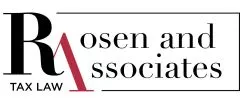- with readers working within the Securities & Investment industries
- within Media, Telecoms, IT and Entertainment topic(s)
- with Inhouse Counsel
On August 26, 2024, the federal government announced new surtaxes targeting imports from China. This move is aimed at safeguarding the Canadian automotive industry, particularly the growing electric vehicle (EV) sector, and follows similar trade measures implemented by the United States and the European Union. While the surtaxes are primarily focused on Chinese EVs, they are expected to have far-reaching effects on multiple industries and businesses.
New Surtax on EVs
Effective October 1, 2024, a 100% surtax will be imposed on all Chinese-made EVs imported into Canada.
The Ministry of Finance released a list of 200 tariff items that will be subject to the new surtax. It is important to note that the new surtax will apply in addition to the Most-Favoured Naton (MFN) tariff of 6.1% that is currently levied on Chinese EVs imports.
New 25% Surtax on Steel and Aluminum Products
In a related move, the government will also impose a 25% surtax on imports of steel and aluminum products effective October 15, 2024.
The Ministry of Finance created an initial list of over 180 steel and aluminum products that will be subject to the new 25% surtax, but is currently soliciting input from stakeholders before finalizing the list of goods subject to the surtax is expected to be announced by October 1, 2024.
What is notable is that any goods in transit to Canada by the October 15 deadline will be exempt from the surtax, adding some flexibility for businesses affected during this transition period.
Impact on Importers
These new surtaxes are expected to heavily impact export-driven businesses and companies that rely on Chinese imports. Affected businesses may need to reevaluate their supply chains and explore alternative sourcing options to mitigate the increased costs brought by the surtaxes. Strategic planning will be key in navigating this shift, especially for companies in the automotive, construction, and manufacturing sectors.
Available Relief – Drawback Program
The Canada Border Services Agency (CBSA) has implemented a trade incentive program that provides relief on duties or tariffs paid for imported goods. Businesses may qualify for the drawback program, which is essentially a refund of customs duties, including surtaxes, paid for imported goods.
To be eligible for the drawback, the goods must be:
- Eventually exported; or
- Manufactured and eventually exported.
And the drawback applies if:
- You import the goods that are later exported as-is;
- You import goods to produce other goods for export; or
- You destroy imported goods that are obsolete or surplus.
You may claim the drawback by completing a Form K32 – Drawback Claim and attach documents establishing the goods qualify and sending the package to your local CBSA office.
Conclusion
As Canada seeks to strengthen its domestic industries and reduce dependency on foreign imports, these surtaxes signal a significant shift in trade policy. Businesses that rely on imports from China will need to act quickly to adjust their strategies and explore available relief options.
The content of this article is intended to provide a general guide to the subject matter. Specialist advice should be sought about your specific circumstances.



